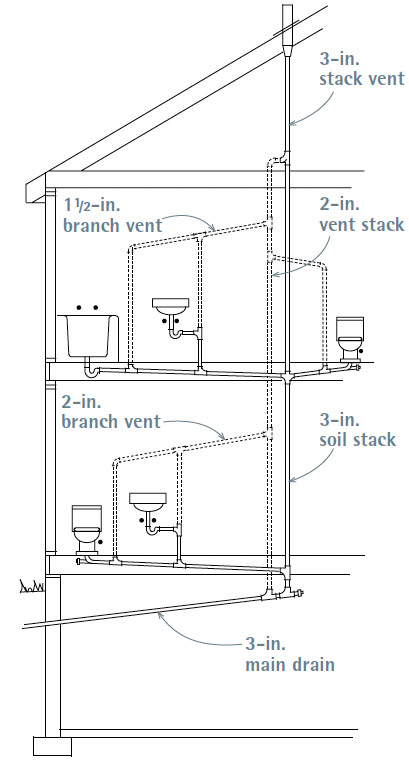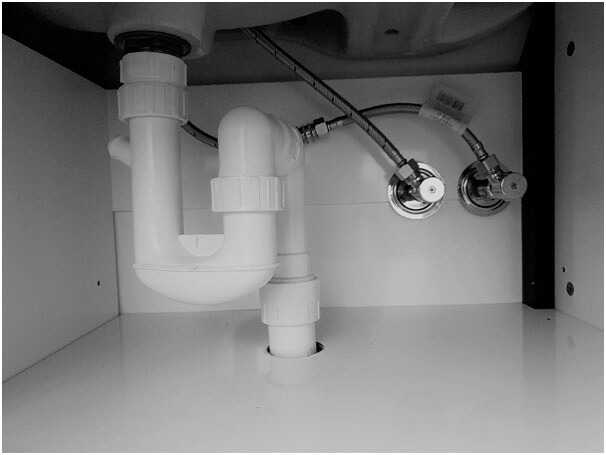The Way Adequate Ventilation Protects Your Plumbing System
The Way Adequate Ventilation Protects Your Plumbing System
Blog Article
Just about every person maintains their private rationale on the subject of Essential Plumbing Vent Pipes: Understanding Their Role.

Appropriate air flow in plumbing systems is often forgotten, yet it is essential for keeping the functionality and security of your home's pipes. Air flow aids control air pressure, stop the build-up of harmful gases, and guarantee the effective removal of waste. In this overview, we will certainly explore the importance of appropriate pipes ventilation, exactly how it works, and the benefits it offers your pipes system.
Recognizing Air Flow in Plumbing
Ventilation in pipes refers to the network of pipelines that allow air to stream with the drainage system. These vents offer numerous purposes, consisting of managing air pressure within the pipelines, protecting against sewage system gases from getting in the home, and helping in the smooth flow of wastewater.
Just How Air Flow Works in Pipes Equipments
Air Pressure Guideline
Appropriate air flow preserves well balanced atmospheric pressure within the plumbing system. When water moves with pipelines, it displaces air. Without appropriate ventilation, this displacement can develop negative stress, leading to slow down drains pipes or siphoning of water from catches, which can cause unpleasant smells to permeate into the home.
Stopping Sewer Gas Build-up
Among the most important features of pipes vents is to prevent sewer gases, such as methane and hydrogen sulfide, from gathering within the home. These gases can position major health and wellness dangers and are extremely combustible. Vent pipelines permit these gases to run away securely outside.
Aiding in Waste Removal
Air flow aids in the efficient removal of wastewater by avoiding airlocks in the drain system. When air can flow freely via the vents, it permits water and waste to stream smoothly with the pipes, decreasing the risk of clogs and backups.
Types of Pipes Vents
Key Stack Vent
The main stack vent, also referred to as the vent pile, is the primary air vent in a pipes system. It extends from the major drain line up via the roofing system, permitting gases to leave and fresh air to get in the system.
Branch Vent
Branch vents connect to the primary pile air vent and offer individual fixtures, such as sinks, bathrooms, and showers. These vents make certain that each component has ample air flow to operate correctly.
Air Admission Shutoff (AAV).
An Air Admission Valve (AAV) is a one-way shutoff that permits air to get in the plumbing system without the need for a standard air vent pipeline prolonging with the roofing. AAVs are typically utilized in restorations or areas where setting up a standard vent is not practical.
Indications of Poor Ventilation in Pipes.
Slow Draining Fixtures.
If your sinks, bathtubs, or toilets are draining pipes slowly, maybe an indication of bad ventilation. Insufficient air flow can create a vacuum cleaner impact, making it tough for water to drain appropriately.
Gurgling Sounds.
Gurgling audios coming from drains are often an outcome of air being drawn through water catches because of adverse stress in the pipelines. This is a clear indication of not enough ventilation.
Undesirable Smells.
Sewer smells inside your home are a warning that your pipes system is not appropriately aerated. This can imply that sewage system gases are not being effectively vented outside, resulting in possibly harmful conditions.
Common Air Flow Errors.
Poor Vent Sizing.
Utilizing undersized vent pipelines can bring about inadequate air circulation and pressure discrepancies in the system. It's vital to utilize vents that satisfy the particular requirements of your pipes system.
Improper Vent Placement.
Positioning vents as well far from the components they serve can lower their efficiency. Correct placement ensures that air can move openly and successfully via the system.
Disregarding Code Demands.
Building ordinance offer specific standards for plumbing air flow. Disregarding these codes can cause a system that fails to work appropriately and may cause pricey repairs or health hazards.
Benefits of Proper Air Flow.
Enhanced System Performance.
Correctly aerated pipes systems operate a lot more successfully, with fewer clogs, faster draining, and much less strain on the pipes. This efficiency extends the lifespan of the pipes system.
Improved Air Top Quality.
By preventing sewer gases from entering your home, correct air flow adds to better interior air top quality, making your living setting healthier and a lot more comfy.
Preventing Water Damages.
Ample air flow helps protect against water from being siphoned out of catches, which can result in sewer gases going into the home and causing water damages over time.
Steps to Ensure Appropriate Ventilation.
Consulting Plumbing Codes.
Constantly speak with regional plumbing codes when designing or customizing your plumbing system. These codes offer the needed guidelines for proper airing vent and ensure your system fulfills safety criteria.
Routine Evaluation and Upkeep.
Normal evaluations can assist determine prospective ventilation concerns before they come to be major troubles. Maintenance tasks, such as cleansing air vent pipelines and checking for blockages, are important for maintaining the system in good working order.
Professional Installation.
For brand-new setups or major modifications, it's a good idea to hire a specialist plumber. They have the expertise to ensure the air flow system is properly developed and mounted according to code.
Final thought.
Proper air flow is a vital component of any type of pipes system, guaranteeing that it operates efficiently and safely. By comprehending the relevance of air flow, identifying the indicators of inadequate ventilation, and taking actions to preserve your system, you can avoid pricey concerns and protect your home's air high quality.
Understanding the Role of Your Plumbing Vents in the Drainage System
The plumbing system in your home is more than just the kitchen sink, toilet, and bathroom. Some problems that arise within home plumbing are hard to detect because homeowners may not understand potential causes.
One part of the plumbing system that could cause you endless problems is the venting. The drain lines that run through your home and drain wastewater need proper venting to function properly. Faulty plumbing vents can lead to several problems that require the expertise of a plumber to check them out. Before finding experienced plumbing services, there are a few things to learn about plumbing vents.
Why vents are vital
Vents in the plumbing system lead to an outside area such as the roof or the back. The function of these vents is to keep sewer gases away from the drain pipes. They also establish seals in the drainage pipes that prevent the sucking back of waste gases into the home. Venting in the plumbing system also allows oxygen to get into the drainage system, which is an essential component in the breakdown of waste matter. The vents also ensure that the air pressure within the drainage system remains balanced, facilitating the flow of wastewater.
Possible problems
When the plumbing vents are problematic, one of the consequences is imbalanced water levels in the toilet. If you notice that the levels in the toilet bowl rise and fall all the time, then there may be something wrong with the vents.
Another issue is air bubble formation within the toilet. In most cases like these, the drain pipes are not receiving enough air. Lack of air pressure equalization is what leads to water flow problems. If you come across such issues in your home, make sure you call professional plumbers, such as the ones from Perfection Plumbing & Drain Cleaning Ltd.
Potential causes
Several scenarios can lead to some of the plumbing problems that homeowners suffer because of venting. One such scenario is the use of incorrectly sized vents. Usually, vents are the same size as the drain line to facilitate proper venting. Vents that are too small will lead to some plumbing issues. Another potential cause is fixtures that are not close enough to the vents. In this scenario, air forces itself through the traps of other fixtures, leading to gurgling sounds from toilets and sinks.
Most of these problems also happen with clogged vents. Tree leaves and debris can cause clogging when they make their way down a vent. Unclogging plumbing vents is a service that you can entrust to Saskatoon plumbers. They will know how to snake down vents and remove clogging stuck in fixtures.

I ran across that write up on The Upsides of Proper Ventilation in Plumbing Design while looking around the web. Sharing is good. You just don't know, you might be helping someone out. We love your readership.
Request Free Estimate Report this page